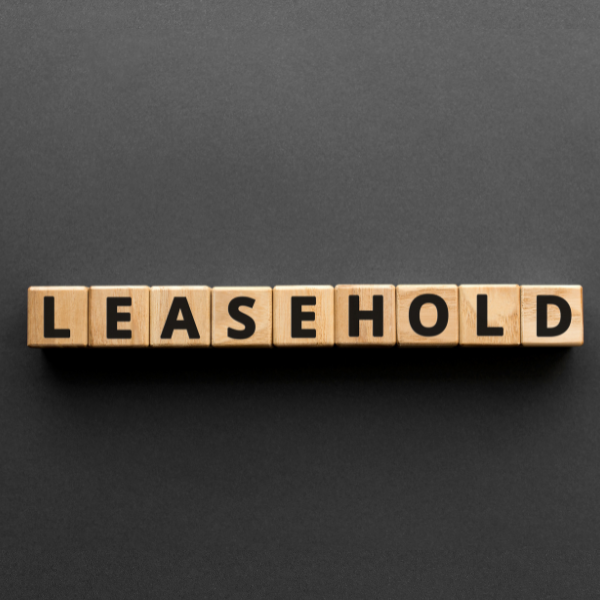
Yearly Rental
July 29, 2024
Freehold
July 29, 2024Leasehold: A Comprehensive Guide to Property Lease Agreements
Introduction
Leasehold is a form of property tenure that allows an individual to lease or rent property for a specific period without owning the land or the building. This article provides an in-depth guide on leasehold, covering its definition, benefits, challenges, the process of creating a leasehold agreement, and essential tips for both tenants and property owners.
What is Leasehold?
Leasehold is a legal agreement that grants a tenant the right to use a property for an agreed period, usually long-term, such as 25, 50, or even 99 years. While the tenant has the right to use the property, the land remains owned by the landlord.
Benefits of Leasehold
Leasehold offers several advantages for both tenants and property owners:
1. Lower Initial Costs
Tenants generally face lower initial costs compared to purchasing a property outright. This makes leasehold an attractive option for individuals or businesses that may not have significant capital for property investment.
2. Stability of Use
Leasehold provides tenants with long-term security in using the property as specified in the lease agreement. This stability allows tenants to plan ahead without the worry of frequent relocations.
3. Investment Opportunity
For property owners, leasehold can be a stable source of income through rental payments received from tenants. It also allows landowners to capitalize on their assets without selling them outright.
Challenges of Leasehold
Despite the many benefits, leasehold also comes with some challenges that need to be considered:
1. Time Limitation
Leasehold agreements have a defined period. When the lease expires, the right to use the property reverts to the landowner unless an extension agreement is reached.
2. Usage Restrictions
Tenants may face restrictions on how they can use the property, as specified by the landlord. These restrictions can include regulations on renovations, structural changes, or specific uses of the property.
3. Maintenance Responsibilities
The responsibility for maintaining the property often falls on the tenant. Tenants must ensure that the property remains in good condition as per the lease agreement.
4. Extended Search Process
Finding the right leasehold property can take longer compared to short-term rentals. Tenants must ensure that the property meets all their long-term needs.
The Process of Creating a Leasehold Agreement
Creating a leasehold agreement involves several critical steps that both parties must follow:
1. Negotiating Terms and Conditions
Tenants and property owners must negotiate to determine the terms and conditions of the leasehold agreement, including the lease duration, rental payments, and maintenance responsibilities.
2. Drafting the Contract
Once terms are agreed upon, the leasehold contract must be drafted in writing. This contract should include all agreed-upon details.
3. Signing the Contract
The leasehold contract must be signed by both the tenant and the property owner in the presence of witnesses or a notary to ensure the legal validity of the agreement.
4. Registering the Agreement
In some jurisdictions, leasehold agreements must be registered with the land registry office or relevant government bodies to provide legal protection for both parties.
Essential Tips for Tenants and Property Owners
1. Understand Terms and Conditions
Both tenants and property owners must clearly understand all the terms and conditions stated in the leasehold agreement, including rent payments, lease duration, maintenance policies, and usage restrictions.
2. Maintain Good Communication
Good communication between tenants and property owners is crucial to avoid misunderstandings and resolve any issues that may arise during the lease period.
3. Ensure Legal Compliance
Ensure that the leasehold agreement complies with all relevant laws and regulations in the jurisdiction. Consult with a legal expert if necessary to verify the legal validity of the agreement.
4. Plan for the Future
Tenants should plan for the lease’s end by considering options for extending the lease or finding alternative properties if needed.
Conclusion
Leasehold is a form of property tenure that offers significant benefits for both tenants and landowners. By understanding the advantages and challenges of leasehold and carefully following the process of creating a leasehold agreement, both parties can enjoy a harmonious and mutually beneficial relationship. Maintaining good communication and ensuring legal compliance are key to a successful leasehold arrangement.
FAQ
1. What is leasehold?
Leasehold is a legal agreement that grants a tenant the right to use a property for a specified period, without owning the land or the building.
2. What are the benefits of leasehold?
Benefits of leasehold include lower initial costs, stability of use, and investment opportunities for property owners.
3. What are the challenges of leasehold?
Challenges of leasehold include time limitations, usage restrictions, maintenance responsibilities, and a potentially longer search process for the right property.
4. How is a leasehold agreement created?
Creating a leasehold agreement involves negotiating terms, drafting the contract, signing the contract in the presence of witnesses or a notary, and registering the agreement with relevant authorities.
5. What tips are important for tenants and property owners in a leasehold arrangement?
Important tips include understanding terms and conditions, maintaining good communication, ensuring legal compliance, and planning for the lease’s end.
By following this guide, you can understand and manage leasehold agreements effectively, creating a stable and mutually beneficial relationship between tenants and property owners.

